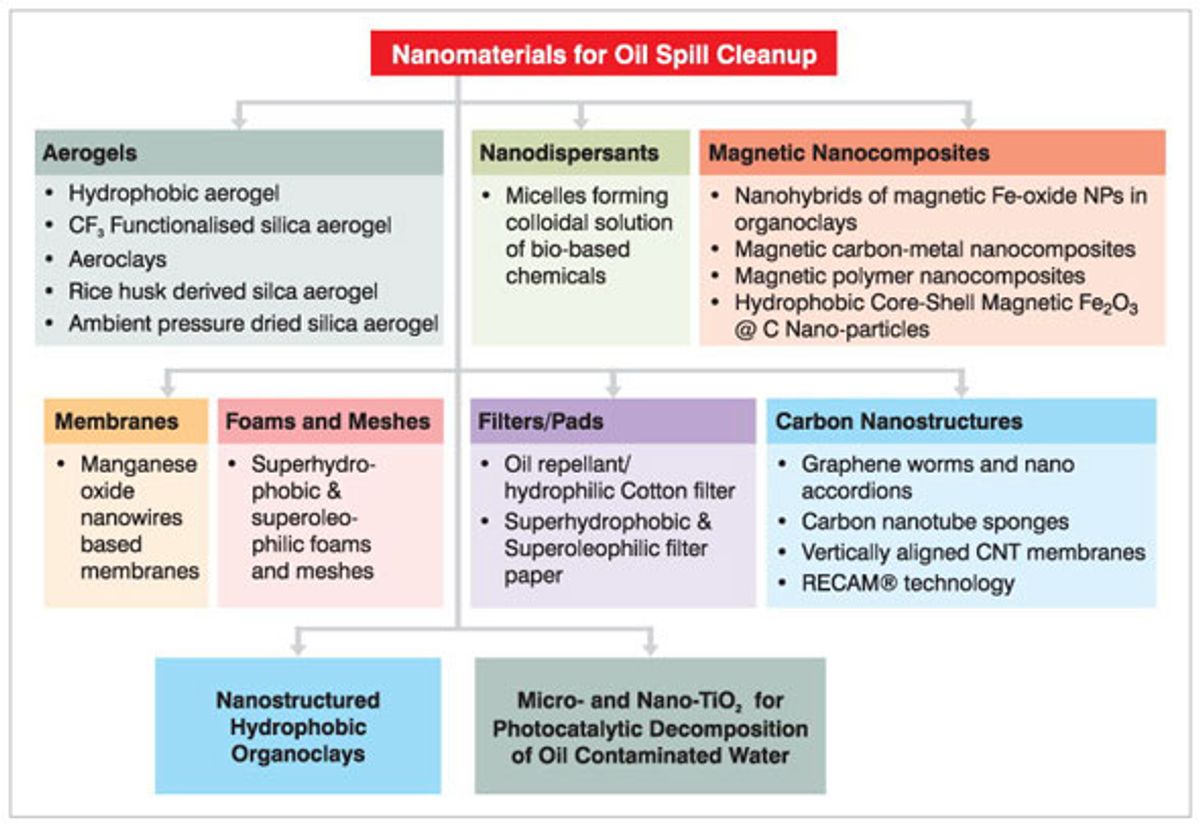Last May when the news cycle was providing non-stop coverage of the Gulf of Mexico oil spill, I wondered how long it would take for someone to ask how nanotechnology could be applied to solve the problem.
The issue that I came to realize was not that there weren’t any interesting proposals for using nanotechnology to address oil spills, but that there weren’t any real commercial solutions that could be applied in that instance. The one commercial product that was available, a nanoparticle-based dispersant, seemed to generate more controversy than offer a remedy.
So now that we're in a new year, it seems that someone has sat down to do a thorough review of the possibilities of applying nanotechnology to oil spills, and it appears to be the work of an organization out of India called Centre for Knowledge Management of Nanoscience and Technology.
But as impressive a catalogue as it is, it still amounts only to possible solutions, which kind of misses the point of what I discovered is the problem. If you want to solve a problem, you have to set aside time, resources and focus one’s will to creating a solution, which no one has done. Making a list of possible solutions may help organize the process but somebody really has to roll up their sleeves and develop one of them.
It might make sense if regulators required that if an oil company is going to engage in deep-sea drilling then they need to have the resources for containing and cleaning up possible oil spills. In such an instance, not only are we protected from huge environmental disasters but we also create a commercial need that may lead to new companies that can come up with nanotechnology-based solution.
Dexter Johnson is a contributing editor at IEEE Spectrum, with a focus on nanotechnology.




